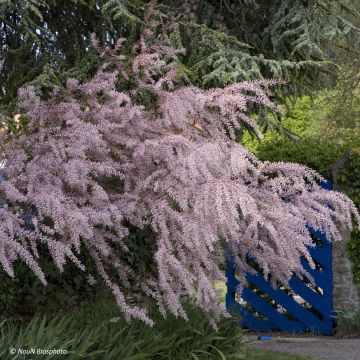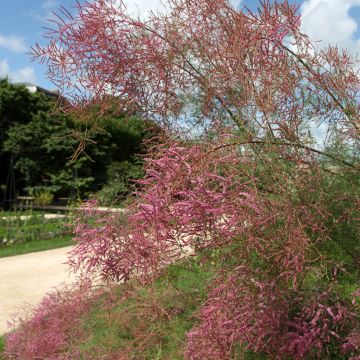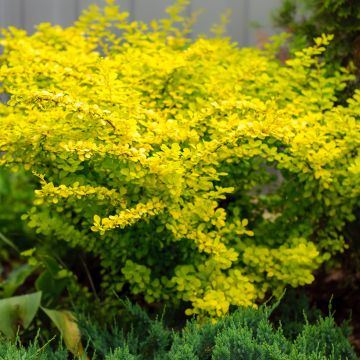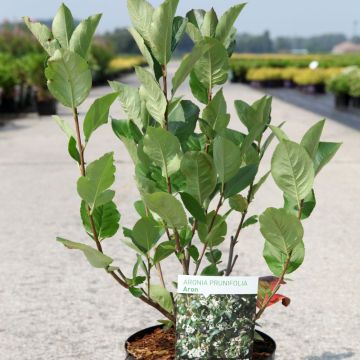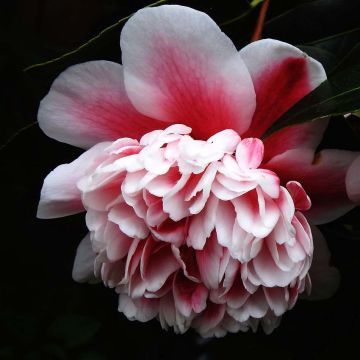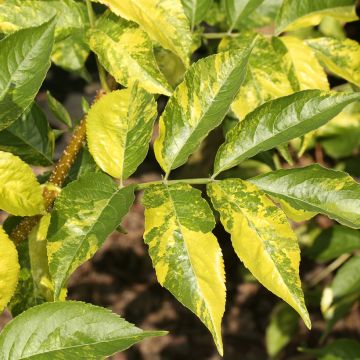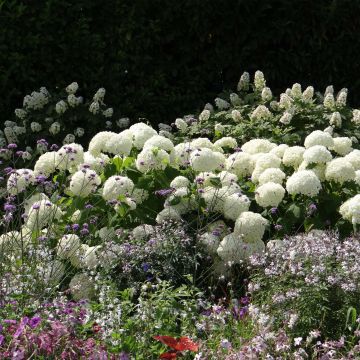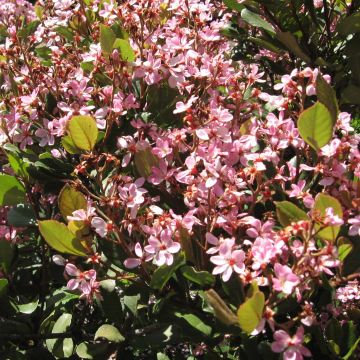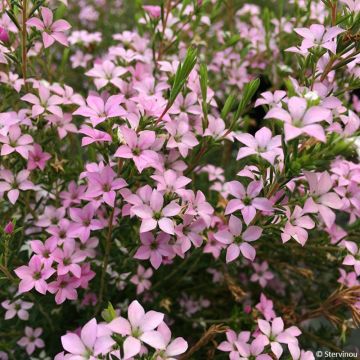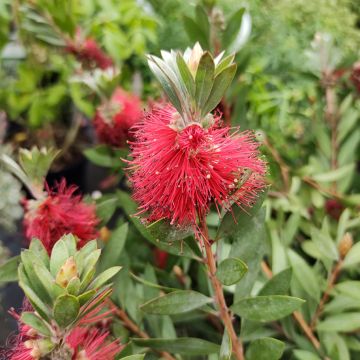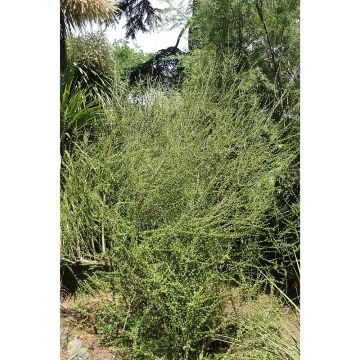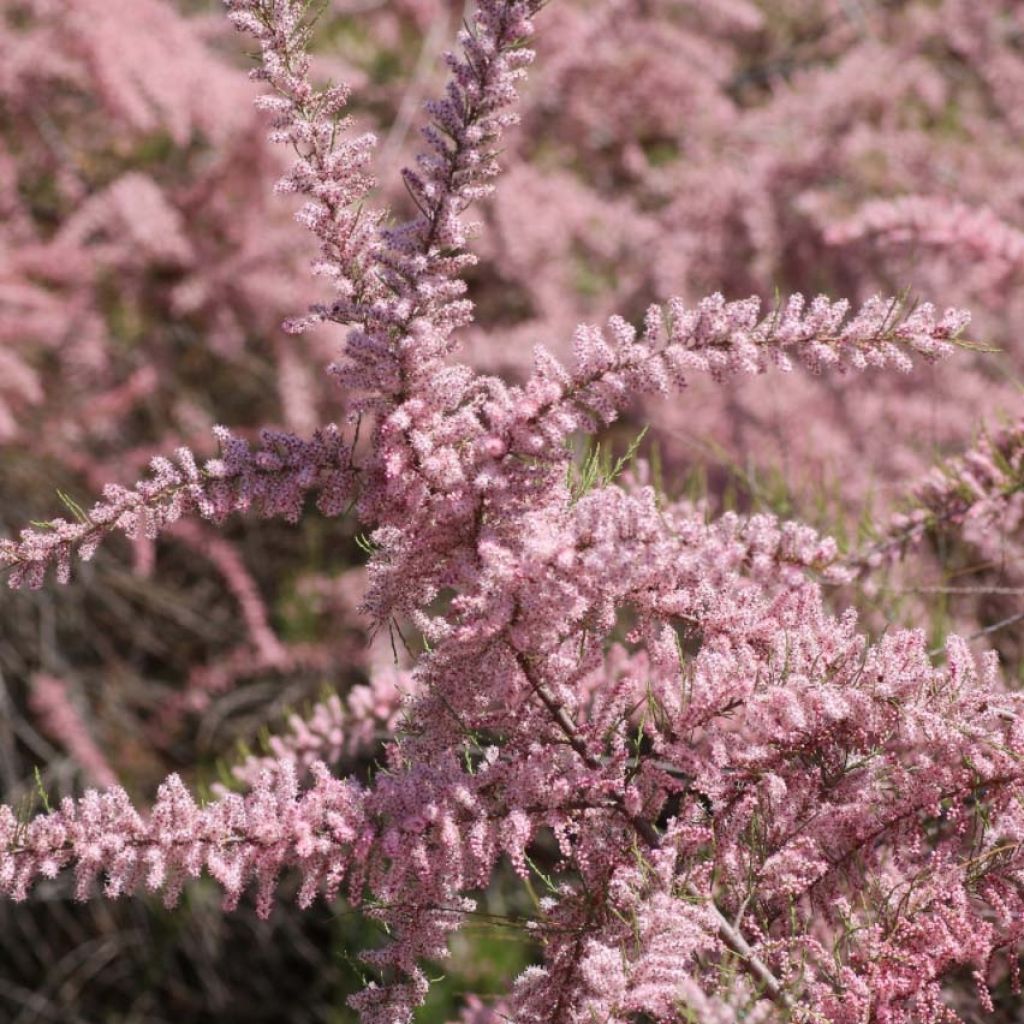

Tamarix parviflora
Tamarix parviflora
Tamarix parviflora
Spring Tamarisk, Small-flowered Tamarisk
This item cannot be shipped to the selected country
Delivery charge from €5.90
More information
Schedule delivery date,
and select date in basket
This plant carries a 24 months recovery warranty
More information
We guarantee the quality of our plants for a full growing cycle, and will replace at our expense any plant that fails to recover under normal climatic and planting conditions.
From €5.90 for pickup delivery and €6.90 for home delivery
Express home delivery from €8.90.

Does this plant fit my garden?
Set up your Plantfit profile →
Description
The Tamarix parviflora, also known as Small-flowered Tamarisk, closely resembles other spring tamarisks (T. tetrandra or gallica), with its weeping branches covered in clusters of small pink flowers preceding the emergence of very fine feathery foliage. However, it is distinguished by its beautiful stature, making it one of the tallest, as well as its beautiful autumn colors, red-orange. This large deciduous shrub or small tree is very cold-resistant, but its roots seek out freshness, even if it has to go deep to find it. It stands out when planted alone or in a windbreak hedge, including in coastal areas with poor, sandy soil.
The Tamarix parviflora, from the tamarisk family, is native to Southeastern Europe, particularly coastal areas of Greece and Albania. In the wild, this shrub never grows far from water, whether it be flowing in terrestrial waterways or in underground aquifers. It has a broad, flexible, spreading habit, with its light canopy of trailing branches topping a short trunk. At maturity, the Tamarix parviflora will reach approximately 4.50 m (15ft) in all directions, with a moderately fast growth rate. Flowering occurs in April-May depending on the climate, on the previous year's shoots. The flowers are tiny pale pink blooms clustered in spikes, fading over time. They are so numerous that they appear to cover every branch with pink plumes. Its deciduous foliage appears after flowering. It consists of very small leaves of a bright green color, resembling tiny scales and equipped with glands capable of excreting salt in solution. This phenomenon sometimes gives the impression that the foliage is shedding tears in salty soil. The delicacy of the foliage, as well as its beautiful autumnal red-orange tones, prolong and confirm the infinitely graceful aspect of the plant. Its dark bark enhances its flowering and foliage. The small-flowered tamarisk can live for more than 50 years. Its root system extends deeply into the soil, making it difficult to move: choose its location carefully from the start!
All tamarisks are perfect for coastal gardens. More or less hardy, more or less drought-tolerant, they all share the ability to withstand salt spray, strong winds, and thrive in sandy, poor soils. The Tamarix parviflora is no exception, but it requires a cool soil. It rarely ventures far from the coast and appreciates the proximity of water sources, although in well-drained soil. Its slightly weeping habit works wonders by a large pond. In this setting, it can be combined with certain bamboo varieties that form large clumps, such as Pleioblastus linearis. Plant it alone, in rows, or in mass plantings, along with Griselinia, Spartium (Spanish broom), Cistus, Atriplex, and more. Prefer a sunny exposure to achieve a well-developed shrub.
Report an error about the product description
Tamarix parviflora in pictures
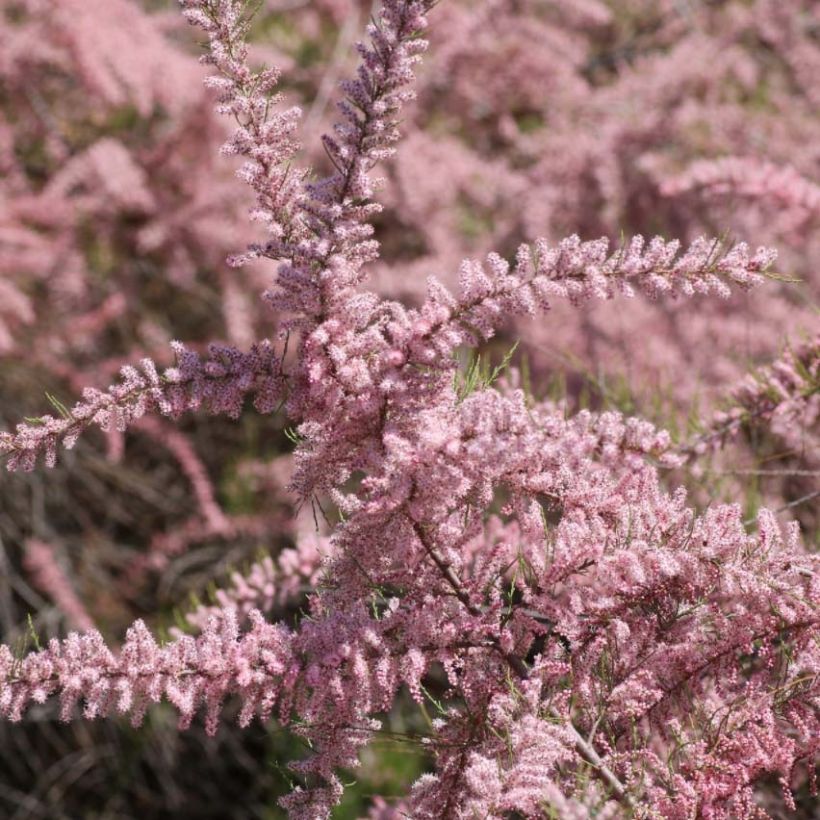

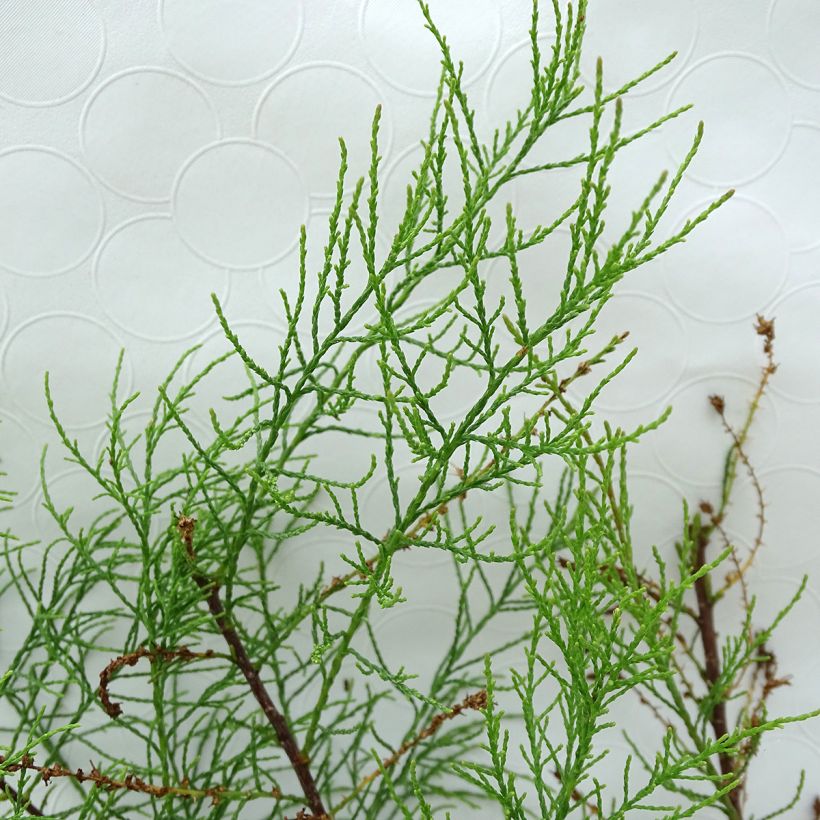

Plant habit
Flowering
Foliage
Botanical data
Tamarix
parviflora
Tamaricaceae
Spring Tamarisk, Small-flowered Tamarisk
Mediterranean
Other Tamarix - Tamarisk
Planting and care
Plant Tamarix parviflora in spring or autumn, in ordinary but properly prepared and well-drained soil. This bush adapts to any slightly acidic, neutral, or even very calcareous soil (this species grows naturally in basic soil), if it is deep and rather light. Heavy soils can suffocate the roots and promote certain diseases or parasites. It prefers sandy soils that remain moist in depth. Choose a very sunny and well-cleared location for it to express the beauty of its habit. In coastal gardens, it can provide dense windbreaks, provided it is severely pruned into a bush after flowering. In most regions, watering and fertilizing are unnecessary once the bush is well established. This is not the case in the Mediterranean, where this tamarisk will suffer from long dry summers if its feet are not close to water. To enhance your tamarisk, prune it every 2 or 3 years, after flowering, by shortening the branches by half.
Planting period
Intended location
Care
-
, onOrder confirmed
Reply from on Promesse de fleurs
Hedge shrubs
Haven't found what you were looking for?
Hardiness is the lowest winter temperature a plant can endure without suffering serious damage or even dying. However, hardiness is affected by location (a sheltered area, such as a patio), protection (winter cover) and soil type (hardiness is improved by well-drained soil).

Photo Sharing Terms & Conditions
In order to encourage gardeners to interact and share their experiences, Promesse de fleurs offers various media enabling content to be uploaded onto its Site - in particular via the ‘Photo sharing’ module.
The User agrees to refrain from:
- Posting any content that is illegal, prejudicial, insulting, racist, inciteful to hatred, revisionist, contrary to public decency, that infringes on privacy or on the privacy rights of third parties, in particular the publicity rights of persons and goods, intellectual property rights, or the right to privacy.
- Submitting content on behalf of a third party;
- Impersonate the identity of a third party and/or publish any personal information about a third party;
In general, the User undertakes to refrain from any unethical behaviour.
All Content (in particular text, comments, files, images, photos, videos, creative works, etc.), which may be subject to property or intellectual property rights, image or other private rights, shall remain the property of the User, subject to the limited rights granted by the terms of the licence granted by Promesse de fleurs as stated below. Users are at liberty to publish or not to publish such Content on the Site, notably via the ‘Photo Sharing’ facility, and accept that this Content shall be made public and freely accessible, notably on the Internet.
Users further acknowledge, undertake to have ,and guarantee that they hold all necessary rights and permissions to publish such material on the Site, in particular with regard to the legislation in force pertaining to any privacy, property, intellectual property, image, or contractual rights, or rights of any other nature. By publishing such Content on the Site, Users acknowledge accepting full liability as publishers of the Content within the meaning of the law, and grant Promesse de fleurs, free of charge, an inclusive, worldwide licence for the said Content for the entire duration of its publication, including all reproduction, representation, up/downloading, displaying, performing, transmission, and storage rights.
Users also grant permission for their name to be linked to the Content and accept that this link may not always be made available.
By engaging in posting material, Users consent to their Content becoming automatically accessible on the Internet, in particular on other sites and/or blogs and/or web pages of the Promesse de fleurs site, including in particular social pages and the Promesse de fleurs catalogue.
Users may secure the removal of entrusted content free of charge by issuing a simple request via our contact form.
The flowering period indicated on our website applies to countries and regions located in USDA zone 8 (France, the United Kingdom, Ireland, the Netherlands, etc.)
It will vary according to where you live:
- In zones 9 to 10 (Italy, Spain, Greece, etc.), flowering will occur about 2 to 4 weeks earlier.
- In zones 6 to 7 (Germany, Poland, Slovenia, and lower mountainous regions), flowering will be delayed by 2 to 3 weeks.
- In zone 5 (Central Europe, Scandinavia), blooming will be delayed by 3 to 5 weeks.
In temperate climates, pruning of spring-flowering shrubs (forsythia, spireas, etc.) should be done just after flowering.
Pruning of summer-flowering shrubs (Indian Lilac, Perovskia, etc.) can be done in winter or spring.
In cold regions as well as with frost-sensitive plants, avoid pruning too early when severe frosts may still occur.
The planting period indicated on our website applies to countries and regions located in USDA zone 8 (France, United Kingdom, Ireland, Netherlands).
It will vary according to where you live:
- In Mediterranean zones (Marseille, Madrid, Milan, etc.), autumn and winter are the best planting periods.
- In continental zones (Strasbourg, Munich, Vienna, etc.), delay planting by 2 to 3 weeks in spring and bring it forward by 2 to 4 weeks in autumn.
- In mountainous regions (the Alps, Pyrenees, Carpathians, etc.), it is best to plant in late spring (May-June) or late summer (August-September).
The harvesting period indicated on our website applies to countries and regions in USDA zone 8 (France, England, Ireland, the Netherlands).
In colder areas (Scandinavia, Poland, Austria...) fruit and vegetable harvests are likely to be delayed by 3-4 weeks.
In warmer areas (Italy, Spain, Greece, etc.), harvesting will probably take place earlier, depending on weather conditions.
The sowing periods indicated on our website apply to countries and regions within USDA Zone 8 (France, UK, Ireland, Netherlands).
In colder areas (Scandinavia, Poland, Austria...), delay any outdoor sowing by 3-4 weeks, or sow under glass.
In warmer climes (Italy, Spain, Greece, etc.), bring outdoor sowing forward by a few weeks.

































